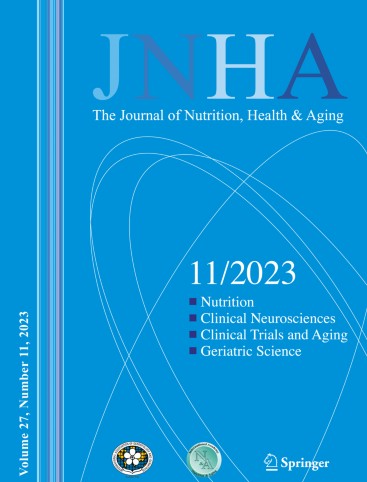口腔健康与住院老年人的老年综合症和临床结果的关系
IF 4.3
3区 医学
Q1 GERIATRICS & GERONTOLOGY
引用次数: 0
摘要
目标评估口腔健康与老年疾病之间的关系,以及口腔健康在急性入院老年患者临床预后中的作用。参与者2018年10月1日至2023年3月31日期间,共有1141名患者(男性651人,女性490人)因患有老年综合征的急性病入院,年龄均在65岁或以上。测量方法进行老年综合评估(CGA),内容包括合并症指数、认知状况、情绪、身体功能、营养状况、活动能力、健康相关生活质量、虚弱程度和口腔健康状况。口腔健康状况通过床边口腔检查进行评估,评分范围为 8 到 24 分,其中 8-10 分表示口腔健康状况正常,11-14 分表示中度受损,15-24 分表示重度受损。结果在参与者中,40.5%的人有认知障碍,24.8%的人有抑郁症状,69.4%的人手部握力低,36.5%的人活动能力差,78.9%的人有营养不良的风险。18.8%的参与者口腔健康严重受损,85.1%的参与者体弱多病。对口腔健康严重程度的分层显示了各组之间在各种 CGA 参数方面的差异,包括合并症、多重药物治疗、认知障碍、抑郁情绪、体力活动、活动能力、营养状况和生活质量,以及住院时间和院内死亡率等临床结果。在单变量分析中,年龄、性别、虚弱程度、口腔健康损害、合并症指数、营养状况以及认知和身体功能都与院内死亡率有显著相关性。结论 在急诊入院的老年患者中,口腔健康与老年疾病有关,并与院内死亡率相关。为改善预后,有必要对口腔健康进行早期干预。本文章由计算机程序翻译,如有差异,请以英文原文为准。
Association of oral health with geriatric syndromes and clinical outcomes in hospitalized older adults
Objectives
To evaluate the relationship between oral health and geriatric disorders, as well as its role in clinical outcomes among acutely admitted older patients.
Design
A retrospective observational study was conducted.
Setting
The study was conducted at a medical center in central Taiwan.
Participants
A total of 1,141 patients (651 males and 490 females), aged 65 years or older, were admitted due to acute illness with geriatric syndromes from October 1, 2018, to March 31, 2023.
Measurements
A comprehensive geriatric assessment (CGA) was conducted, covering the comorbidity index, cognitive status, mood, physical function, nutritional status, mobility, health-related quality of life, frailty, and oral health condition. Oral health was evaluated using a bedside oral examination with scores ranging from 8 to 24, where scores of 8–10 indicated normal oral health, 11–14 indicated moderate impairment, and 15–24 indicated severe impairment. The primary outcome observed was in-hospital mortality.
Results
Among the participants, 40.5% experienced cognitive impairment, 24.8% exhibited depressive symptoms, 69.4% had low hand grip strength, 36.5% demonstrated low performance in mobility, and 78.9% were at risk of malnutrition. Severe impairment of oral health was found in 18.8% of the participants, while frailty was observed in 85.1%. Stratification of oral health severity revealed differences in various CGA parameters, including comorbidity, polypharmacy, cognitive impairment, depressive mood, physical activity, mobility, nutritional status, and quality of life, as well as clinical outcomes such as length of stay and in-hospital mortality between the groups. In univariable analysis, age, gender, frailty, oral health impairment, comorbidity index, nutritional status, and cognitive and physical functions were all significantly associated with in-hospital mortality. After adjusting for significant factors, severe oral health impairment remained significantly associated with mortality.
Conclusion
In acutely admitted older patients, oral health was associated with geriatric disorders and was linked to in-hospital mortality. Early intervention in oral health may be necessary to improve outcomes.
求助全文
通过发布文献求助,成功后即可免费获取论文全文。
去求助
来源期刊
CiteScore
7.80
自引率
3.40%
发文量
136
审稿时长
4-8 weeks
期刊介绍:
There is increasing scientific and clinical interest in the interactions of nutrition and health as part of the aging process. This interest is due to the important role that nutrition plays throughout the life span. This role affects the growth and development of the body during childhood, affects the risk of acute and chronic diseases, the maintenance of physiological processes and the biological process of aging. A major aim of "The Journal of Nutrition, Health & Aging" is to contribute to the improvement of knowledge regarding the relationships between nutrition and the aging process from birth to old age.

 求助内容:
求助内容: 应助结果提醒方式:
应助结果提醒方式:


